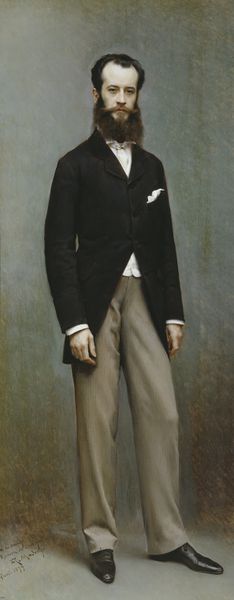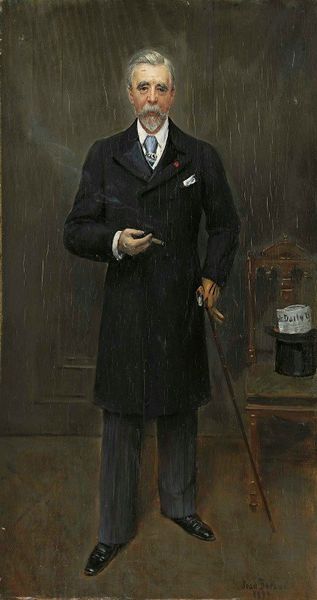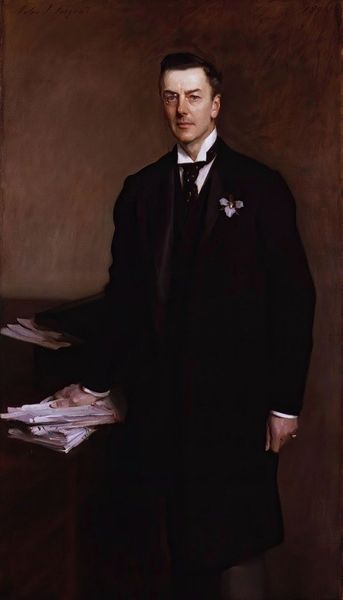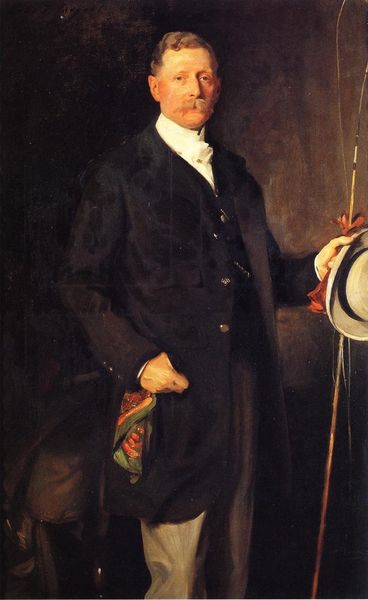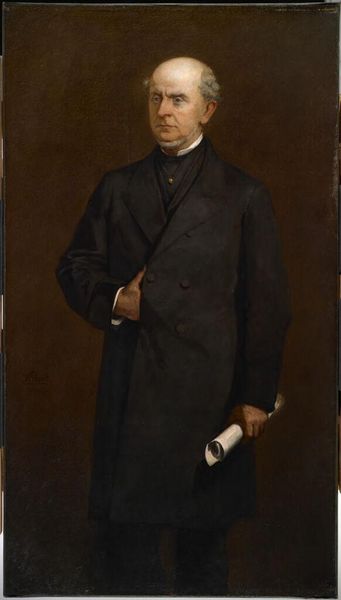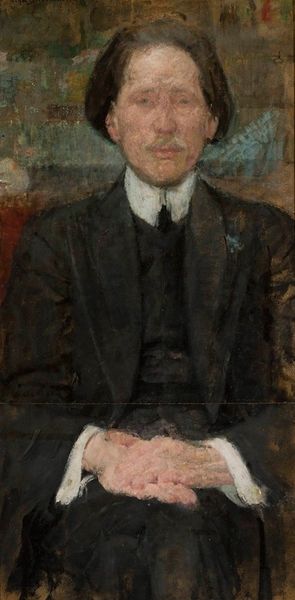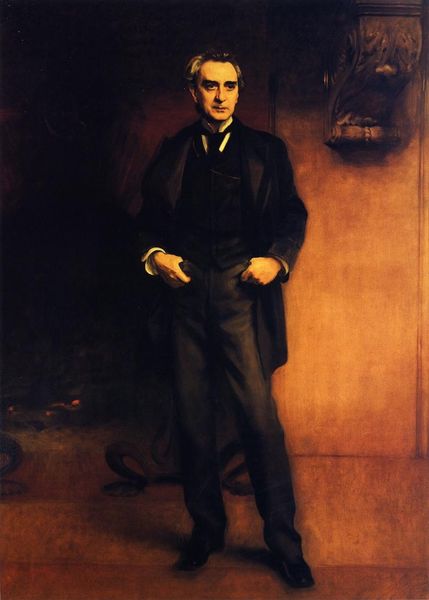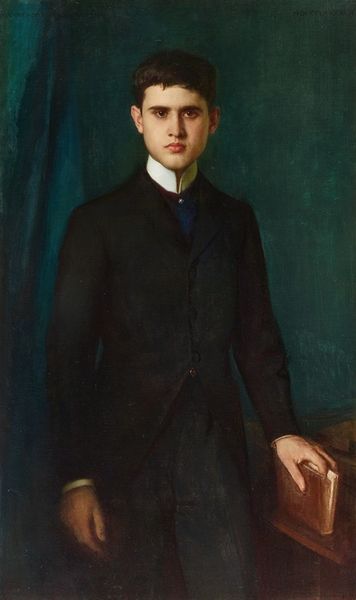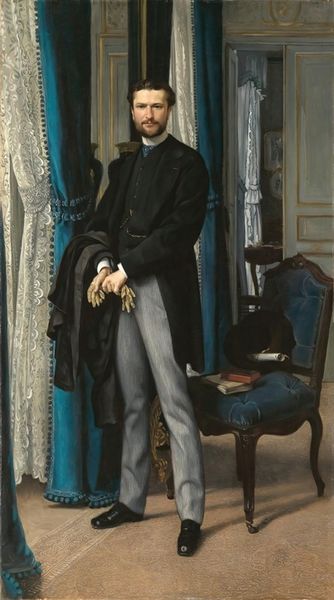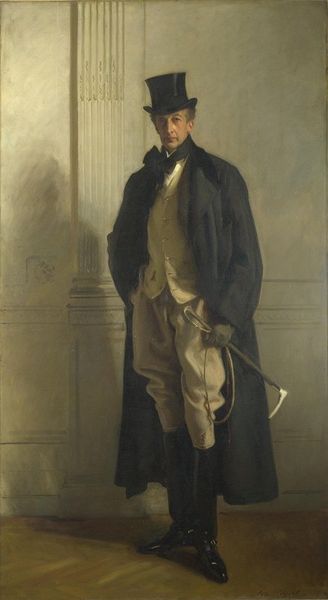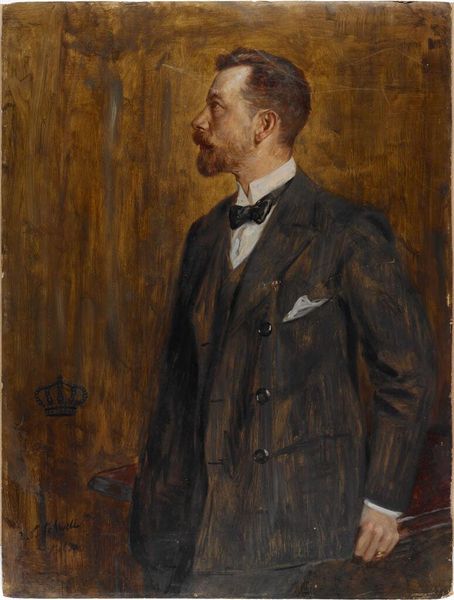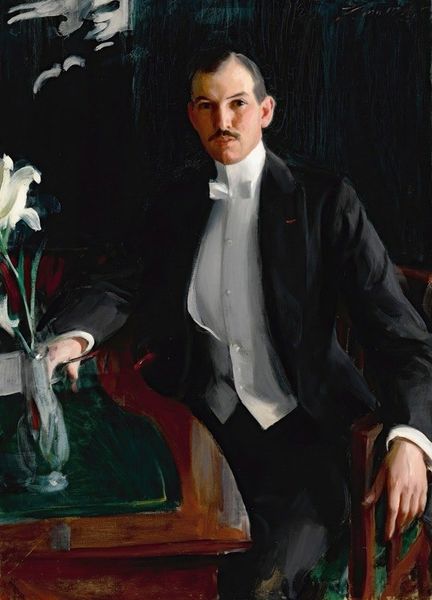
Copyright: Public Domain: Artvee
Vittorio Matteo Corcos created this portrait of a man with oil on canvas sometime between the late 19th and early 20th centuries. Corcos, a master of academic realism, emphasizes the textures of the sitter's clothing, the glossy finish of the flowers in the background, and the soft and muted tonality of the canvas in the background. While the painting is representational, the artist's brushstrokes are clearly visible in the sitter's gray suit. This serves as a reminder of the human labor involved in the painting's production. The painting's material qualities—the canvas, the oil paint, the brushstrokes—are all testaments to the traditional skills of the artist. But the painting also offers a glimpse into the sitter's lifestyle and status. His suit and tie, the objects displayed on the table, and the artwork in the background all speak to the sitter's place in a rapidly industrializing society. In the end, it’s in this intersection of materials, processes, and social context that the work's true meaning emerges, challenging traditional distinctions between fine art and craft.
Comments
No comments
Be the first to comment and join the conversation on the ultimate creative platform.
